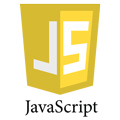
JavaScript courses
- jQuery Fundamentals
- Introduction to JavaScript Course
- Advanced JavaScript Programming
Sorry, we currently do not have any public courses scheduled for the JavaScript level 1 course. Please contact us to see if we can put one on the schedule for you
Sorry, we currently do not have any public courses scheduled for the JavaScript level 1 course. Please contact us to see if we can put one on the schedule for you
jQuery Fundamentals
Course Description
jQuery is a lightweight JavaScript Library which allows you to write less code and do more. The purpose of jQuery is to make it much easier to use JavaScript on your website. It takes common tasks that require many lines of JavaScript code to accomplish, and wraps them into methods that can call with a single line of code.
jQuery simplifies a lot of complicated things from JavaScript like AJAX calls and DOM Manipulation. jQuery has plugins for almost every task and runs the same across all major browsers.
This 3-day course provides extensive training on selectors, DOM manipulation, handle events, create effects, build AJAX applications, write and use jQuery plugins and organize jQuery code. When you complete this course you will be able to complete basic tasks using jQuery, and you will have a solid basis from which to continue your learning.
Target Audience
This course is aimed for Front-end developers. Experienced with HTML, CSS and JavaScript users who want to use jQuery in website or web application development.
Prerequisites
HTML & CSS
Introduction to JavaScript
jQuery Fundamentals
Module 1: jQuery Introduction
Module 2: JavaScript Basics
Module 3: jQuery Basic Concepts
Module 4: jQuery Core
Module 5: Events and Event Handlers
Module 6 : Effects
Module 7: Ajax
Module 8: Plugins
Module 9: Best Practices
Module 10: Custom Events
Our outlines are a guide to the content covered on a typical course. We may change or alter the course topics to meet the objectives of a particular course.
Sorry, we currently do not have any public courses scheduled for the JavaScript level 2 course. Please contact us to see if we can put one on the schedule for you
Sorry, we currently do not have any public courses scheduled for the JavaScript level 2 course. Please contact us to see if we can put one on the schedule for you
Introduction to JavaScript Course
Course Description
Students will learn how to use JavaScript effectively to make their web pages more dynamic and functional. JavaScript functions can include arithmetic operations, date and time functions, random numbers, text strings and components of document content. It can also include functions to make pop-up windows and confirmation boxes. JavaScript is useful with html submission forms and the training is ideal for the newcomer to JavaScript
Target Audience
The JavaScript course targets Programmers and Developers who would like to gain the knowledge of developing Web based applications.
Prerequisites
HTML Training course or equivalent knowledge.
Introduction to JavaScript Course
Module 1: JavaScript Basics
- The Name "JavaScript"
- What is ECMAScript?
- The HTML DOM
- JavaScript Syntax
- Accessing Elements
- Where Is JavaScript Code Written?
- The "javascript" Pseudo-Protocol
- JavaScript Objects, Methods and Properties
Module 2: Variables, Arrays and Operators
- JavaScript Variables
- Arrays
- JavaScript Operators
Module 3: JavaScript Functions
- Global Functions
- User-defined Functions
- Returning Values from Functions
Module 4: Event Handlers
Module 5: Built-In JavaScript Objects
Module 6 : Conditionals and Loops
Module 7: JavaScript Form Validation
Module 8: The HTML Document Object Model
Module 9: CSS Object Model
Module 10: Images, Windows and Timers
Module 11: Debugging and Testing with Chrome
Our outlines are a guide to the content covered on a typical course. We may change or alter the course topics to meet the objectives of a particular course.
Sorry, we currently do not have any public courses scheduled for the JavaScript level 3 course. Please contact us to see if we can put one on the schedule for you
Sorry, we currently do not have any public courses scheduled for the JavaScript level 3 course. Please contact us to see if we can put one on the schedule for you
Advanced JavaScript Programming
Course Description
In this Advanced JavaScript Programming training course, you will learn advanced JavaScript techniques that include working with the ECMAScript 2015 (referred to as "ES2015" or "ES6") and ECMAScript 2016 (referred to as "ES2016" or "ES7") releases.
The course includes a thorough exploration of advanced objects, arrays, and functions; the XMLHttpRequest (Ajax) API; and working with JSON. Finally, you will learn to handle errors and exceptions and to use regular expressions in JavaScript.
Target Audience
Individuals who need to learn the advanced features of JavaScript
Prerequisites
Advanced JavaScript Programming
Module 1: Scope
Module 2: Advanced Objects
Module 3: Advanced Functions
Module 4: Advanced Arrays
Module 5: XHR
Module 6 : JSON
Module 7: Errors and Exceptions
Module 8: Regular Expressions
Our outlines are a guide to the content covered on a typical course. We may change or alter the course topics to meet the objectives of a particular course.


